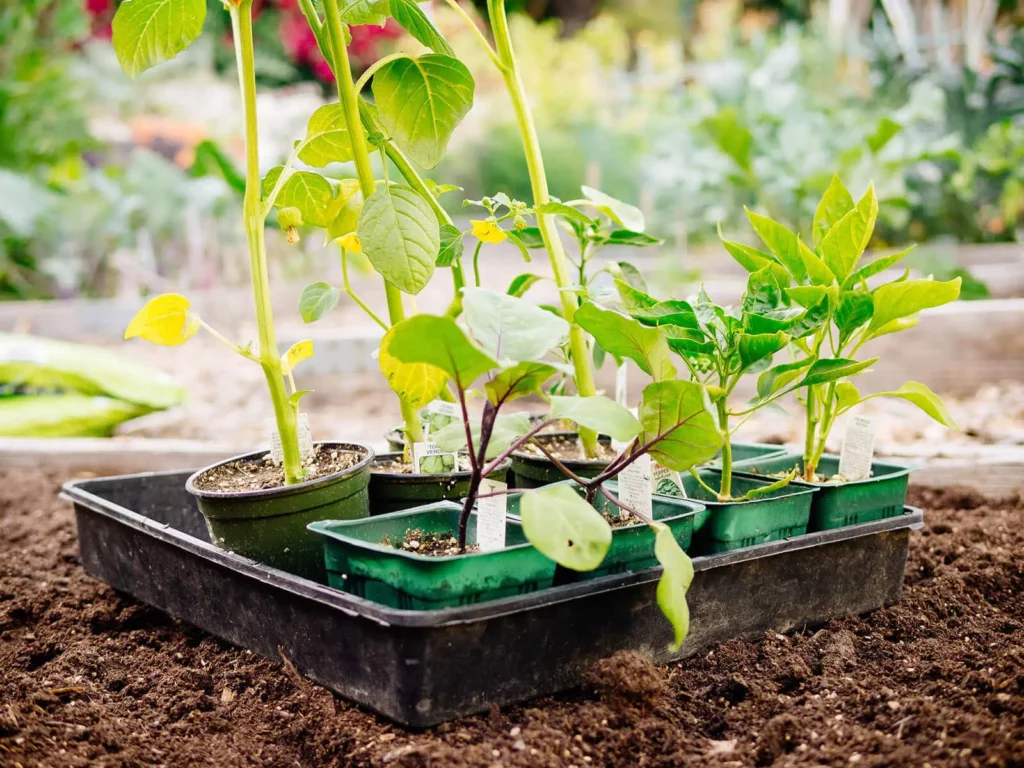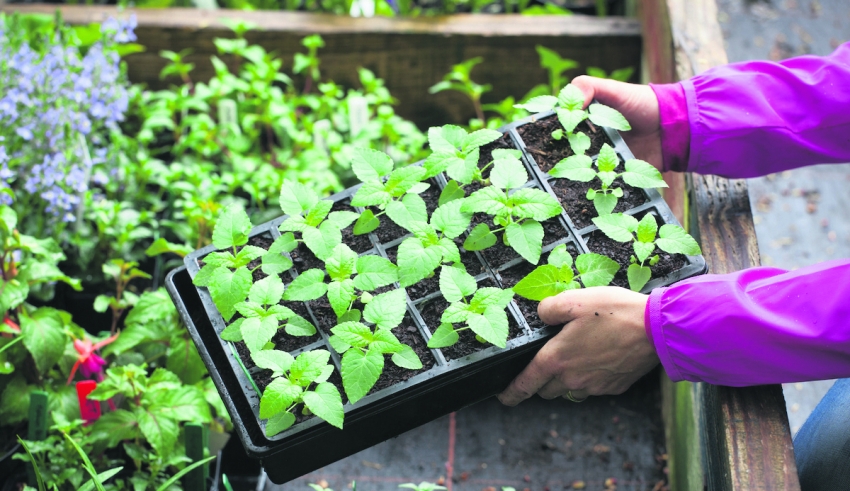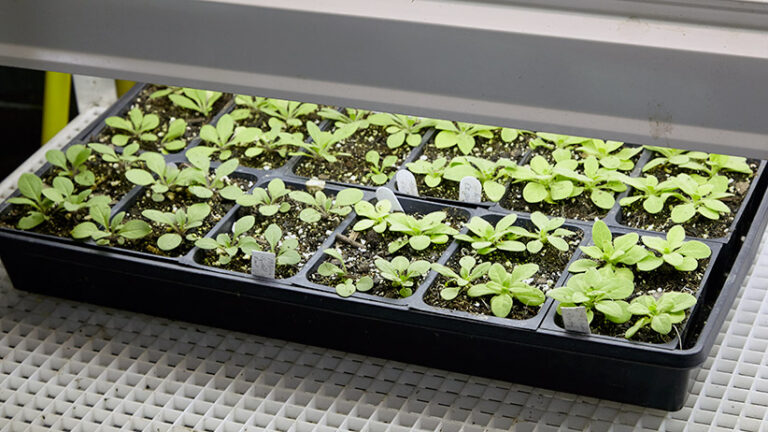As a keen gardener, I once faced a dilemma – how to help my greenhouse-grown plants thrive when moved outdoors. The answer lies in a crucial step: “hardening off.” It’s about getting your indoor darlings ready for the big outdoor world.
But what is hardening off, and why is it essential? I am going to share the basics of hardening off your plants, ensuring they adapt smoothly to their new outdoor environment.
“Hardening off” is like giving your indoor plants a gentle outdoor orientation. It involves slowly introducing them to cooler temps, less humidity, and more breeze over two to three weeks. This helps them adapt to outdoor life without stress or harm.
Even if your plants started indoors, like ones from a local greenhouse, they need to learn the ways of outdoor life. This means getting used to changing temperatures, wind, and sunlight. In simpler terms, it’s all about “hardening them off”
What’s the benefit of hardening off plants?

Hardening off plants is a vital horticultural practice that delivers a wealth of advantages to gardeners. At its core, this process involves the gradual introduction of indoor-grown plants to the often unpredictable outdoor world. Here’s why it’s such an essential step in your gardening journey:
Indoor environments, such as greenhouses, typically maintain stable temperatures. When you move your plants outdoors, they encounter temperature fluctuations that can be a shock to their system. Hardening off allows them to adapt slowly to these changes, preventing stress and potential damage. This adaptation reduces the risk of wilting, stunted growth, or even death due to extreme temperature swings.
Humidity and Moisture Indoor conditions often provide higher humidity levels than what outdoor environments offer. By transitioning your plants gradually, they become accustomed to lower humidity levels and the need for different watering routines. This adaptation helps prevent issues like mold or fungus growth, root rot, and other moisture-related problems.
The wind can be a formidable force for delicate greenhouse-raised plants. During the hardening-off period, plants learn to sway and flex in response to breezes, which strengthens their stems and overall structure. This increased wind resistance helps them stand tall and sturdy once they’re permanently planted outdoors.
Indoor-grown plants are shielded from direct sunlight, while outdoor conditions can provide intense and prolonged sunlight exposure. Hardening off gradually exposes your plants to more sunlight, preventing sunburn and allowing them to build up a natural defense against UV rays.
Perhaps the most significant benefit of hardening off is the overall vigor it imparts to your plants. When you take the time to acclimate them to the outdoors, you’re effectively setting the stage for robust and healthy growth. Expect to see stronger root systems, fuller foliage, and improved resistance to pests and diseases.
For those growing vegetables or fruits, hardening off can significantly impact your harvest. Well-acclimated plants are more likely to produce larger yields of high-quality produce. This means a more productive and satisfying gardening experience.
When Should You Harden Off Plants?
Imagine you’ve been taking care of your plants indoors, whether in a greenhouse or your home and now it’s time to let them experience the great outdoors. But you can’t just move them from their comfy indoor environment to the sometimes unpredictable outdoor world all at once. That’s where the timing of hardening off becomes crucial.
Here’s a simple plan: about one to two weeks before you plan to plant your indoor-grown plants outside in your garden, you should start the hardening-off process. However, this timing isn’t set in stone and can change depending on where you live and the types of plants you’re growing.
In places with cool, temperate weather like the northern United States and the United Kingdom, the hardening-off season typically kicks off around April. However, in colder regions, you might want to wait until May to begin. The trick is to start this process about 1 to 3 weeks before you plan to move your young plants, whether they’re seedlings or cuttings, from inside to their new outdoor homes.
To figure out the right moment to begin, you need to know when the last frost is expected in your specific area. This date can vary significantly depending on your location. Some regions have earlier last frosts, while others have later ones. To find this crucial information, consult local gardening resources or, even better, talk to experienced local gardeners who know your area well.
Keep in mind that not all plants are the same. Some are like tough adventurers and adapt to outdoor conditions pretty quickly. These plants might only need a short hardening-off period. On the other hand, some plants are more delicate and need more time to get used to outdoor life, preventing any shock to their systems.
In simpler terms, when you start the hardening-off process depends on where you live, the types of plants you have, and your gardening goals. If you get this timing right, you’re setting up your garden for success, filled with healthy and thriving plants that can handle life outdoors.
How to Harden Off Plants Effectively?
This process is all about helping your indoor-grown plants smoothly transition to the great outdoors, and it can make a world of difference in their overall health and resilience.
Gradual Exposure: The foundation of effective hardening off is the concept of gradual exposure. Think of it as a gentle introduction to the elements. Start by placing your indoor-raised plants in a sheltered, partially shaded outdoor spot for just a few hours each day. This spot should shield them from the harshest sunlight and wind. Over the course of one to two weeks, gradually extend their outdoor time. This incremental increase in outdoor exposure allows the plants to adjust to changes in light, temperature, and wind without becoming stressed.
To harden off your plants effectively, start by spending just an hour outdoors each day, adding more time gradually. This helps your plants get used to the changing sunlight and wind. The secret here is to take it slow and steady. Avoid putting delicate seedlings outside on windy days or when it’s colder than 45 degrees Fahrenheit.
Constant Monitoring: During the hardening-off period, keep a close watch on your plants. They’ll provide visual cues if they’re not adapting well. Signs of stress might include wilting leaves, yellowing, or slowed growth. If you spot these signals, don’t worry; it’s a natural part of the process. Simply adjust the duration and intensity of their outdoor exposure accordingly. Be ready to bring them back indoors if conditions become too extreme, ensuring their safety and well-being.
Protective Measures: Sometimes, Mother Nature throws unexpected challenges at your plants. To protect them during this vulnerable stage, consider using protective covers like row covers, cloths, or improvised shields. These covers act as a buffer against strong winds, heavy rain, and even late-season frost, providing an extra layer of insulation to keep your plants safe.
Watering and Feeding Adjustments: As your plants transition, their water and nutrient needs will change. Indoor conditions often require more frequent watering, but outdoor environments may naturally provide more humidity. Be cautious not to overwater, which can lead to root rot. Additionally, reduce fertilization during this time. Transplant shock can make plants more sensitive to nutrients, so it’s wise to go easy on the fertilizers until they’re fully acclimated.
Gradual Increase in Exposure: Keep upping the ante in terms of outdoor exposure. As your plants become more accustomed to the outdoor conditions, you can gradually extend their time outdoors. This step-by-step approach ensures they’re well-prepared for the final transplant into your garden or outdoor containers.
In essence, effective hardening off is a careful balancing act of providing your plants with the outdoor experience they need while safeguarding their well-being. It’s a process of patience and adaptation that pays off in the long run.
Tools and Tips for a Successful Hardening Off Process

Achieving a successful hardening-off process for your plants involves a combination of the right tools and useful tips.
Protective Covers: Row covers, cloths, or even improvised shields can be valuable tools during the hardening-off process. These covers provide an extra layer of protection against strong winds, heavy rain, and late-season frost, ensuring your plants remain safe and insulated from unexpected weather challenges.
Shaded Areas: Identify partially shaded areas in your outdoor space where you can initially place your plants. This reduces the intensity of sunlight exposure, preventing sunburn and helping your plants gradually adjust to brighter conditions.
Gentle Breezes: Wind can be a friend and a foe during hardening off. While you want to expose your plants to wind gradually, be mindful not to place them in overly windy spots that could damage their delicate leaves and stems. Finding a location with gentle breezes is ideal.
Monitoring: Regularly check on your plants during the hardening-off period. Look for any signs of stress, such as wilting or yellowing leaves. This proactive monitoring allows you to make timely adjustments to their outdoor exposure and ensure they remain healthy.
Watering Adjustments: Tailor your watering routine to the changing conditions. As your plants move outdoors, they may need less water due to increased humidity. Avoid overwatering, which can lead to root problems. Water thoroughly but allow the soil to dry out slightly between watering sessions.
Reduced Fertilization: During hardening off, it’s advisable to reduce fertilization. Transplant shock can make plants more sensitive to nutrients, so it’s best to limit fertilizers until they’re fully adjusted to outdoor life.
Gradual Progression: Continue to extend the amount of time your plants spend outdoors gradually. This progression helps them acclimate thoroughly and minimizes the risk of stress or shock.
Timing: Pay attention to the weather forecast. Avoid placing your plants outside on windy days or when temperatures drop below 45 degrees Fahrenheit, as this can be too harsh for tender seedlings.
In summary, the right tools and smart tips play a pivotal role in ensuring the success of your hardening-off process.
Common mistakes to avoid during the hardening-off process
Skipping the Process: Perhaps one of the most critical mistakes is entirely bypassing the hardening-off step. It’s easy to underestimate its significance, especially if you’re eager to move your indoor-grown plants into the outdoor garden quickly.
However, doing so can lead to dire consequences. Indoor conditions are vastly different from the outdoor environment, and without the gradual familiarization that hardening off provides, your plants may struggle to adapt. The result could be stressed, stunted, or even dead plants unable to cope with the abrupt transition.
Rushing the Process: Equally detrimental is rushing through the hardening-off period. Impatience can lead gardeners to expose their plants to outdoor conditions too hastily. This sudden shift can shock your plants, negating the benefits of the hardening-off process. A hurried approach can result in unhealthy growth, reduced yields, and plants that are ill-equipped to face the challenges of outdoor life. Remember, patience is a virtue when it comes to gardening.
Ignoring Individual Needs: Plants are not one-size-fits-all when it comes to hardening off. Each type of plant has unique characteristics and needs. Some are naturally hardier and adapt more readily to outdoor conditions, while others are more delicate. Failing to consider these individual requirements can lead to problems.
To avoid this, research the specific needs of the plants you’re cultivating. Tailor your hardening-off approach accordingly, giving delicate varieties the extra time and care they require.
Neglecting Weather Forecasts: Overlooking weather forecasts can be a costly oversight. Placing your plants outdoors on days with strong winds or when temperatures dip below 45 degrees Fahrenheit can expose them to harsh conditions. Checking weather forecasts and being mindful of upcoming weather patterns allows you to plan your hardening-off schedule wisely, ensuring a smoother transition for your plants.
Overwatering and Over-fertilizing: Overenthusiastic watering and fertilizing are common pitfalls during hardening off. Indoor growing often requires more frequent watering and higher nutrient levels, but outdoor conditions can provide moisture and nutrients naturally. Overwatering can lead to waterlogged soil and root problems, while over-fertilizing can overwhelm your plants, making them more susceptible to stress. Adjust your watering and fertilization routines to suit the changing needs of your plants as they transition outdoors.
In essence, the hardening-off process requires careful consideration and a well-thought-out approach. Avoiding these common mistakes ensures that your plants have the best chance to thrive as they move from the comfort of your indoor space to the dynamic challenges of the great outdoors.
FAQs:
Do you have to harden off tomato plants?
Yes, you have to harden off tomato plants. Tomato plants, like many other seedlings, benefit from the gradual transition to outdoor conditions to avoid stress and damage.
Do onion seedlings need to be hardened off?
Yes, onion seedlings also need to be hardened off. Hardening off helps them adapt to outdoor conditions and ensures a healthier growth pattern.
What happens if you don’t harden off?
If you don’t harden off your plants, they can experience transplant shock, which may lead to stunted growth, wilting, or even plant death when suddenly exposed to outdoor conditions.
Can you harden off plants with a fan?
Yes, you can use a fan to help harden off plants. A gentle breeze from a fan can simulate outdoor wind conditions and promote stronger stem development.
When should I start hardening off?
The timing for starting the hardening-off process varies based on your local climate, but it’s typically about 1 to 2 weeks before your planned outdoor planting date.
What temperature do plants harden at?
Plants generally harden off when exposed to temperatures between 45°F to 55°F (7°C to 13°C). However, this can vary depending on the specific plant species and their tolerance to temperature fluctuations.
Final thought
In conclusion, I’ve learned that hardening off plants is super important for a successful garden. It’s like a gentle transition from indoor to outdoor life. I’ve realized that taking it slow and being patient is key. Rushing or skipping this step can cause problems for my plants.
I’ve also figured out that paying attention to the weather is crucial. Putting my plants outside on windy or super cold days can hurt them. So, I’ve learned to check the weather forecast and plan accordingly.
Lastly, avoiding common mistakes like overwatering and over-fertilizing has become a habit. I now adjust my care routine to what my plants really need.
All in all, hardening off is like a secret recipe for a healthy garden. It’s made me a better gardener, and I’m excited to see my outdoor plants thrive thanks to this process.

